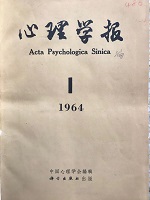|
|
FACTORS EFFECTING THE ACCURACY OF DISTANCE JUDGMENT
PENG JUI-HSEUNG, LIN CHUNG-HSIEN
1964, 8 (1):
11-21.
5 discs were presented in a 650×45×45cm light-tight box. Under reduced illumination, S was requested to employ the distance (80 cm) between two near-by discs as the standard, and adjust three other discs into equi-distance. 8 conditions were investigated: 1, Discs with size equated (diameter: 2 cm) and their brightness matched beforehand by E; 2, Size equated, with brightness matched, viewed with monocular observation; 3, Size varied according to Emmert's law, with brightness matched; 4, Size decreased consecutively by 20%, with brightness matched; 5, Size equated, brightness arranged from dim to bright; 6, Size equated, brightness arranged from bright to dim; 7 and 8, Size and brightness as in condition 1, two columns of light spots were added along the inner walls of the box. In condition 7, the light spots were arranged in an expanding pattern that looked like a gradient of artificial texture; whereas in condition 8, the light pattern were arranged in the reverse.The results indicated that, under conditions 1, 2, 3 and 8, most Ss made overestimated distance judgments, wherein condition 3 was the most striking. Conversely, under conditions 4 and 6, most Ss made underestimations. The judgments made under conditions 5 and 7 were quite accurate, approaching the physical distance. The lawabiding effect produced by size as a variable on distance judgments under reduced illumination conformed with judgments made under normal conditions. It seems that size is an independent variable in distance judgment notwithstanding that the absolute magnitude of stimuli and the absolute magnitude of standard distance being changed. The causes of errors of judgments are discussed in relation to the mechanism of association.
Related Articles |
Metrics
|




